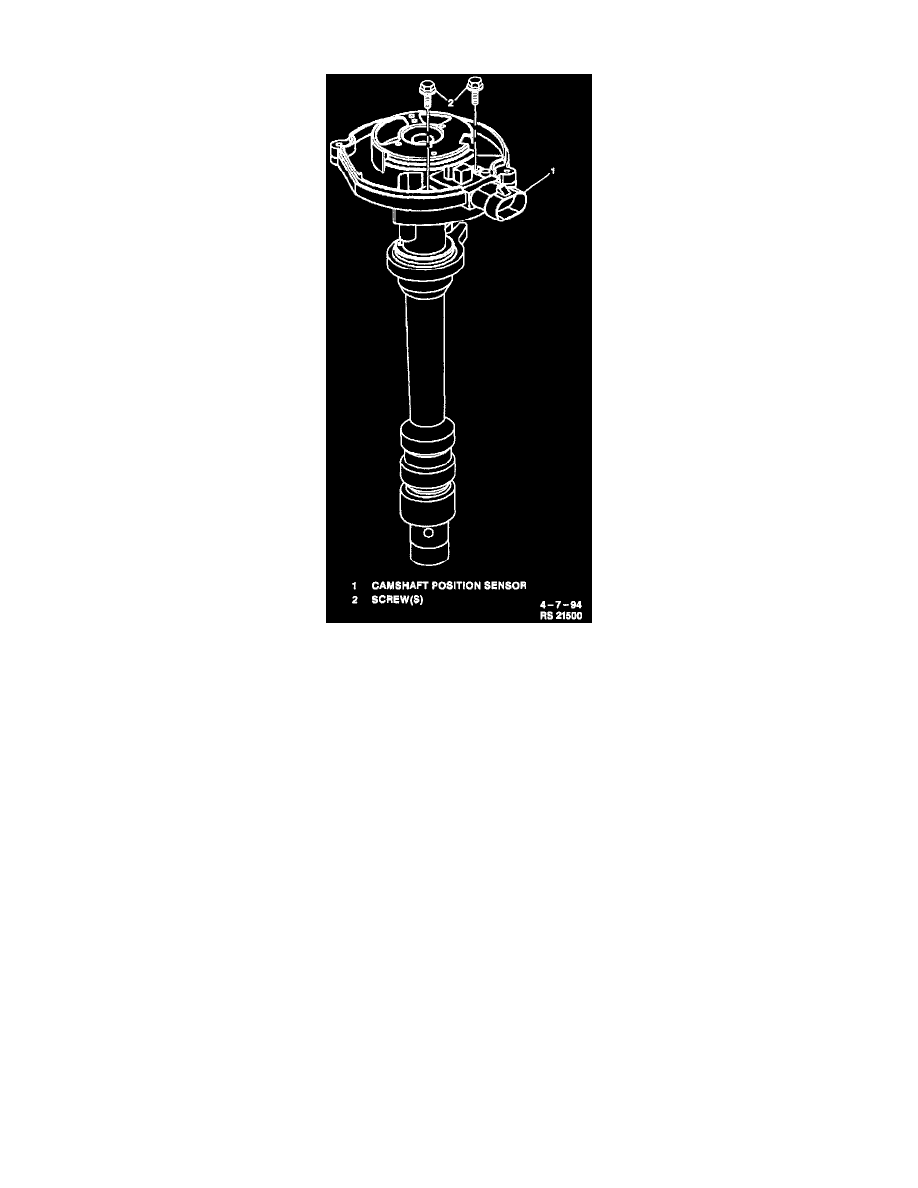S10/T10 P/U 2WD V6-4.3L VIN W (1997)

Camshaft Position Sensor: Description and Operation
Camshaft Position Sensor
Description
The Camshaft Position (CMP) sensor is located within the distributor. It's operation is very similar to the Crankshaft Position (CKP) sensor however it
will provide one pulse per camshaft revolution (1x signal). This signal is not detrimental to the driveability of the vehicle. The Vehicle Control Module
(VCM) utilizes this signal in conjunction with the crankshaft position to determine which cylinder(s) are misfiring.
Varying octane levels in today's gasoline can cause detonation in an engine. This detonation is sometimes called a spark knock. All engines use a Knock
Sensor (KS) system with a knock sensor. The KS system reduces spark knock in the engine. This allows the engine to have maximum spark advance for
improved driveability and fuel economy.
Operation
A Vehicle Control Module (VCM) is used in conjunction with one knock sensor in order to control detonation. On a VCM application no KS module
will be found as it is internal to the control module.
A 5 volt reference is applied to the knock sensor which has an internal resistance of about 100,000 ohms. This resistance will lower the applied voltage
to about half or 2.5 volts. When a knock is present, a small AC voltage is produced by the knock sensor and transmitted to the control module riding on
top of the already existing 2.5 volts. An AC voltage monitor inside the control module will detect the knock and trigger the control module to start
retarding the spark incrementally.
